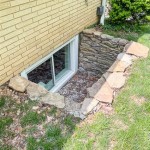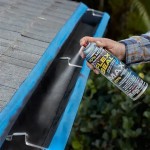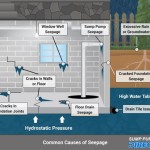How to Dry Basement Carpet After Water Damage
Flooding or water damage can be a major inconvenience, especially if it affects your basement carpet. Fortunately, with the right steps, you can dry out your carpet and prevent mold and mildew growth. Here's a comprehensive guide to help you effectively dry your basement carpet after water damage:
1. Safety First
Before you begin drying your carpet, ensure your safety by wearing protective gear such as gloves, boots, and a mask to avoid contact with contaminated water or mold spores. If the water is deep, consider using a pump to remove the excess before proceeding.
2. Remove Excess Water
Use towels, sponges, or a wet/dry vacuum to absorb as much water as possible from the carpet. Blot and soak up the water without rubbing, as this can damage the fibers. Continue until no more water can be removed.
3. Ventilate the Area
Open windows and doors to promote air circulation and ventilation. This will help dry the carpet and prevent moisture buildup. If possible, use fans to circulate the air and speed up the drying process.
4. Dehumidify the Air
A dehumidifier is an effective tool for removing moisture from the air and preventing mold growth. Place the dehumidifier in the center of the basement and run it until the humidity level drops below 50%.
5. Clean the Carpet
Once the carpet is dry to the touch, it's important to clean it to remove any dirt or contaminants that may have been deposited by the water. Use a carpet cleaner and follow the manufacturer's instructions. If the water was contaminated, consider using a disinfectant cleaner.
6. Inspect for Damage
After cleaning, inspect the carpet for any signs of damage, such as discoloration, fraying, or buckling. If there is significant damage, it may need to be replaced. Consult with a professional flooring contractor for an assessment.
7. Monitor for Mold
Monitor the carpet for any signs of mold growth. If mold appears, it's essential to address it promptly to prevent further damage. Use a mold cleaner or hire a professional to remove the mold and prevent its spread.
Tips for Prevention
To minimize the risk of water damage to your basement carpet in the future, consider the following preventive measures:
- Clean your gutters regularly to prevent water buildup and overflow.
- Install a sump pump to remove water from the basement during heavy rain or flooding.
- Seal any cracks or gaps around windows, doors, and basement walls to prevent water seepage.

How To Dry Out Basement Carpeting Diy Family Handyman

How To Dry A Wet Fitted Basement Carpet With Little Effort Youtube

How To Dry Carpet After A Flood

7 Tips For Drying Wet Carpet And Preventing Mold Growth To Go

How To Dry Carpet Padding After A Leak Cleaning Tips Youtube

Drying Wet Carpet In Your Basement A Step By Guide Heckhome

How To Dry A Wet Fitted Basement Carpet With Little Effort Youtube

How To Dry Wet Carpet

7 Tips For Drying Wet Carpet Preventing Mold Growth Astrobrite Local Family Run

How To Dry A Wet Fitted Basement Carpet With Little Effort Youtube








